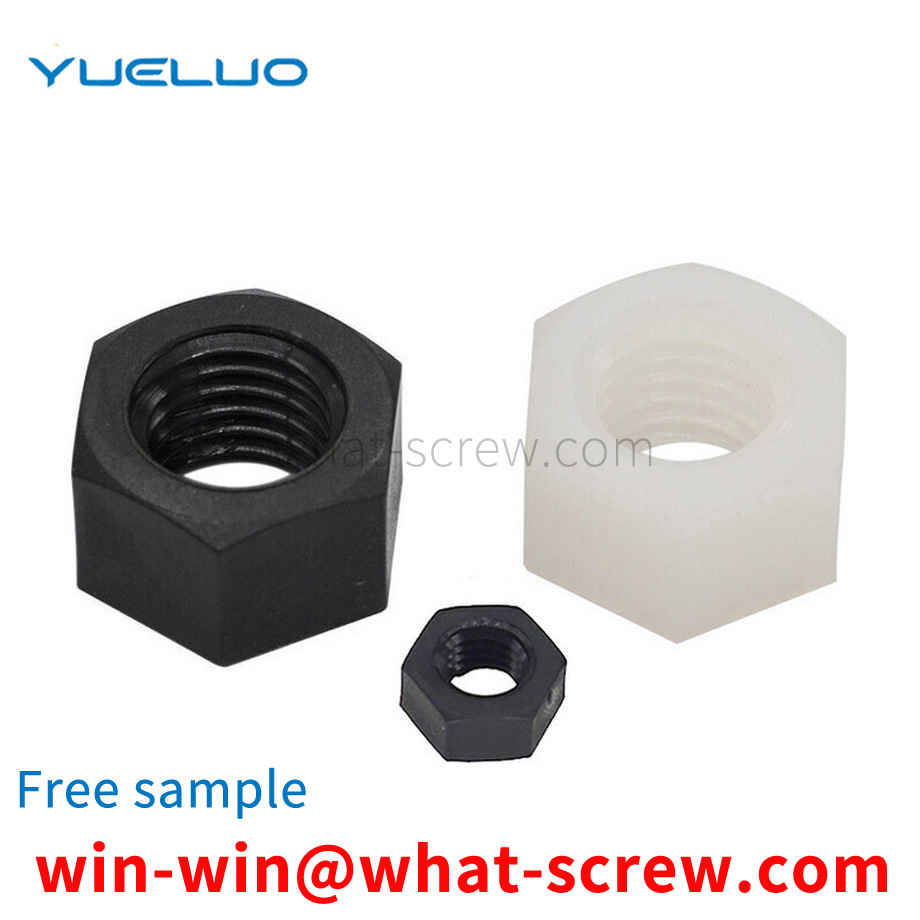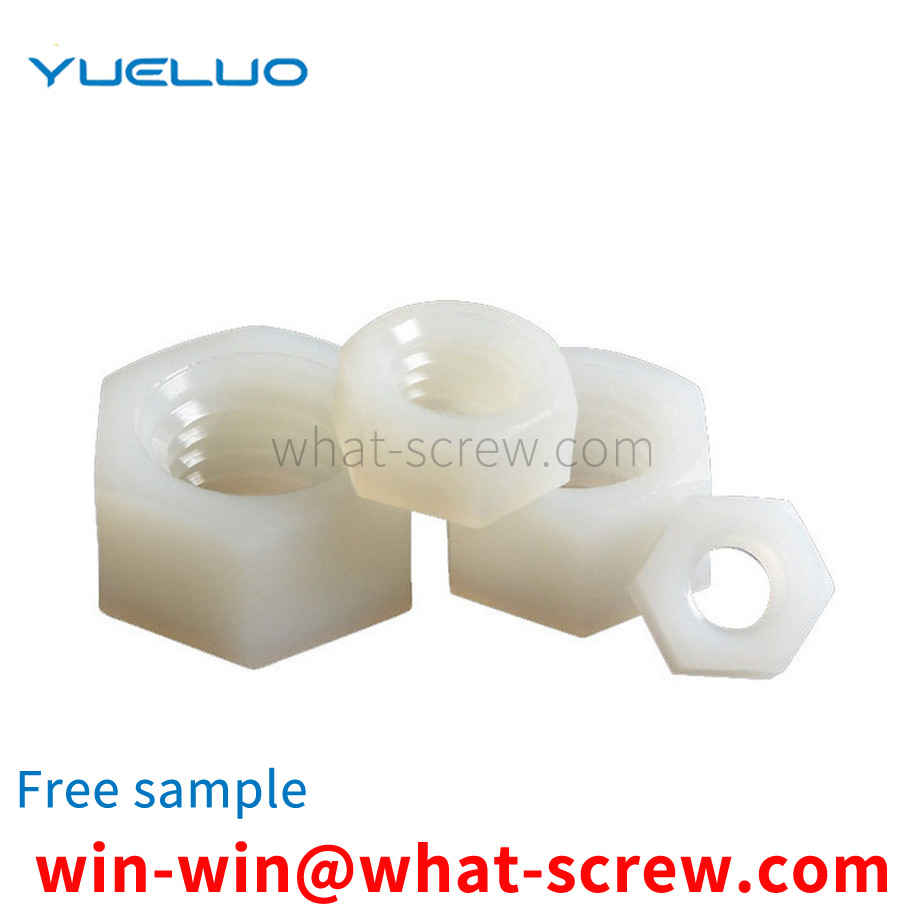Stud bolts are manufactured in accordance with GB897-GB901 standards, the materials used are: Q235, 45#, 40Cr, 35CrMoA, Q345D, the specifications are: M3mm-M100mm, and the length can be customized according to user needs. High strength stud bolts, materials are 35#, 45#, 35CrMoA, 25Cr2MoV, 304, 316, 304L, 316L, 2H, 2HM, B7, B7M, B16, B8, 8, B8M, 8M, widely used in electric power, chemical industry , oil refining, valves, railways, bridges, steel structures, automobile and motorcycle accessories and other fields: generally used in mining machinery, bridges, automobiles, motorcycles, boiler steel structures, pendant towers, long-span steel structures and large buildings, etc. . Representation method of stud bolts: General stud bolts are expressed as: M12×100 GB 901-88 (standard) 35#/35# (material) 8.8 grade/8 grade (modulation grade) means: diameter = 12mm length = 100mm GB 901-88 adopts the national standard (of course, the industry standard can also be used as needed) stud bolt standard: GB 900-1988 Introduction to stud bolts Stud bolts save time and cost All stud bolt structures do not require drilling, Steps such as punching, threading, riveting, threading and finishing continue to expand the application potential of structural design, high current and small penetration. Therefore, welding to very thin sheets is possible. The workpiece for stud welding must be welded from one side. Can be soldered in all positions, with the help of extenders on vertical bulkheads that can be restricted. Since it is welded for a short time and there is little deformation after welding, no trimming is required. Because the welded structure does not require drilling, there is no leakage. The joint can achieve high strength, that is, the joint strength of stud welding is greater than the strength of the stud itself. How to install studs Good economy The advantage of other welding methods is the welding power. For mass-produced workpieces, standard studs are low cost. There are various types of equipment and welding torches, and the acquisition cost of equipment is relatively low. According to the product, it can be made into a multi-station automatic welding machine, or a high-precision gantry-type CNC automatic welding machine. Stud welding has high quality reproducibility and low rejection rate. However, in the application of stud welding, it should be noted that, like other fusion welding, there are certain restrictions on the carbon content in the steel. For structural steel studs, welding should be performed according to the recommended combination of stud material and base metal. There will be infusibility with the base metal. Combinations of stud material and base metal outside the recommended range shall be tested to determine the weldability and the product design requirements of the anchor bolt for the possibility of relevant inspection and evaluation.
Installation method broadcast 1. One-time burying method: When pouring concrete, bury the anchor bolts. When the high tower is controlled by overturning, the anchor bolt should be buried once. 2. Reserved hole method: The equipment is in place, the holes are cleaned, the anchor bolts are placed in the holes, the equipment is positioned and aligned, and then poured with non-shrinkage fine stone concrete that is one level higher than the original foundation, and compacted and compacted. . The distance from the center of the anchor bolt once buried to the edge of the foundation should not be less than 2d (d is the diameter of the anchor bolt), and should not be less than 15mm (d≤20, it should not be less than 10mm), not less than half the width of the anchor plate Add 50mm, when the above requirements cannot be met, appropriate measures should be taken to strengthen it. The diameter of the anchor bolts used for the structure should not be less than 20mm. When subjected to earthquake action, double nuts should be used for fixing, or other measures to effectively prevent loosening should be adopted, but the anchorage length of anchor bolts should be increased by 5d compared with the anchorage length of non-seismic action. Installation planning of anchor bolts Treatment of anchor bolts loose in the foundation When the anchor bolts are tightened, the bolts may be pulled out. At this time, the bolts should be adjusted to their original positions, and the foundation around the bolts should be shoveled out enough. , and then weld two U-shaped steel bars vertically and horizontally on the bolts, and finally clean the pit with water and grouting, and then tighten the live anchor bolts after the concrete has solidified to the design strength. The treatment method of the live anchor bolt deviation is roughly the same as the dead ground. The method for the anchor bolts is the same, except that the anchor bolts can be pulled out for processing. If the bolt is too long, a section of the thread can be cut off on the machine tool; if the bolt is too short, it can be extended by hot forging; if the position is inconsistent, it can be corrected by bending. Application industry: suitable for various equipment fixing, steel structure foundation embedded parts, street lights, traffic signs, pump, boiler installation, heavy equipment embedded fixing, etc.
Heat treatment technology has a crucial impact on high-strength fasteners, especially its intrinsic quality. Therefore, in order to produce high-quality high-strength fasteners, advanced heat treatment technology and equipment must be available. 1. Status of heat treatment of high-strength fasteners High-strength fasteners have 4 performance levels, namely 8.8, 9.8, 10.9, and 12.9. These four grades of high-strength fasteners must be quenched and tempered. The purpose of heat treatment and tempering is to improve the comprehensive mechanical properties of fasteners to meet the specified tensile strength value and yield ratio of the product. Therefore, the quenching and tempering process has strict requirements on raw materials, furnace temperature control, furnace atmosphere control, quenching medium, heat treatment quality inspection and control, etc.
Stamping die is a special process equipment for processing materials into parts in cold stamping processing, called cold stamping die. Stamping is to use the die installed on the press to apply pressure to the material at room temperature to make it produce Separation or plastic deformation to obtain the required parts of a pressure processing method, the technology generally used is to make corresponding holes and punches on the template, this method cannot meet the requirements for small batches and short delivery time products , the relative cost is relatively high, so a rivet die structure is required to improve the above problems.
With the popularization of electrical equipment, the door cover that integrates the panel, the controller, the sealing and waterproof function and the appearance decoration has gradually been required for equipment matching. The head directly affects the appearance, and for kitchen equipment such as dishwashers, the fixing screws of the door cover are easily rusted in direct contact with the washing water, which urgently needs a door cover structure that is easy to disassemble but does not affect the appearance.
We have many years of experience in the production and sales of screws, nuts, flat washers, etc. The main products are: grade 10.9 screws, round pins, hexagon socket bolts, round machine nuts and screws and other products, we can provide you with suitable fastening products piece solution.



















 Service Hotline
Service Hotline




